The Electronic Intifada 2 February 2022

The Israeli military razes Palestinian agricultural land during an incursion into Khuzaa, east of Khan Younis, southern Gaza Strip, 18 January.
APA imagesIsraeli forces shot and killed two Palestinians in the occupied West Bank during January.
Bakr Muhammad Hashash, 21, was killed in a shootout with Israeli soldiers attempting to arrest him at the entrance to Balata refugee camp in the West Bank city of Nablus.
On 17 January, Falah Jaradat, 39, was killed by an Israeli soldier who he allegedly tried to stab at the Gush Etzion junction near the West Bank city of Hebron. No Israelis were reported injured.
Israel is holding Jaradat’s body as part of a policy approved by its highest court to detain the corpses of alleged Palestinian assailants so that they may be used as bargaining chips in negotiations with Palestinians.
Another Palestinian allegedly drove his car into Israeli soldiers at a checkpoint near a settlement in the central West Bank, injuring a soldier and himself, on 11 January. The Palestinian was arrested.
“The families of both alleged perpetrators said that they had psychological difficulties,” according to the UN monitoring group OCHA.
Stress-induced heart attack
Three other Palestinians died from injuries sustained during Israeli military and police operations in the West Bank in January.
Omar Assad, an 80-year-old with multiple medical conditions, died of a stress-induced heart attack while being detained by soldiers who arbitrarily stopped him as he was driving home in Jiljiliya village near Ramallah in the early hours of 12 January.
Israeli soldiers blindfolded and handcuffed Assad, who held US citizenship, for more than an hour. The soldiers provided no medical aid upon discovering that he was unresponsive and instead quickly withdrew.
No arrests have been made in relation to Assad’s death in Israeli custody.
Israel, which initially claimed that Assad died after being released by soldiers, reportedly reprimanded the commander of the battalion that raided Jiljiliya. The “platoon and company commanders will both be removed from their positions” and will not hold commanding roles for two years, The New York Times reported.
The US State Department, noting the disciplinary action against the commander and officers responsible, said that it “expects a thorough criminal investigation and full accountability in this case.”
UNRWA, the UN agency for Palestine refugees, called for an investigation into the death of Haj Suleiman Hathaleen, who was struck by a tow truck during an Israeli police operation in the South Hebron Hills on 5 January.
Hathaleen, a prominent community leader and activist in his 70s, died of his injuries on 17 January.
Tear gas at health clinic
That same day, Fahmi Abdelraouf Hamad, 57, died after inhaling teargas fired by Israeli soldiers near an UNRWA clinic that Hamad was visiting in Qalandiya refugee camp, near Ramallah.
Soldiers “fired large amounts of tear gas in the vicinity of the health centers and schools in the camp,” affecting people visiting the clinic, according to UNRWA.
Israeli authorities disregarded “multiple appeals by UNRWA to halt the shooting of tear gas near its installations and allow patients and staff to be evacuated,” the UN agency added.
Staff at the health center called paramedics to evacuate Hamad but “during the evacuation, tear gas was fired around the ambulance.” An UNRWA staff member “required medical attention due to tear gas inhalation” and Hamad died later that day, according to the agency.
UNRWA called on “Israeli security forces to conduct an immediate investigation into all circumstances surrounding this operation.”
Also during January, a 25-year-old Palestinian was struck and killed by a vehicle driven by an Israeli settler near Beit Sira village in the Ramallah area. The Israeli driver reportedly turned themselves in to Israeli police.
Meanwhile, two Israeli officers were killed after being “misidentified and shot by a fellow soldier” while on patrol near a military base in the Jordan Valley on 12 January.
A military commander told the Tel Aviv newspaper Haaretz that “the officers didn’t follow the protocols of encountering a suspect that they are seeking to apprehend, and instead shot to kill.”
For years, human rights groups have accused Israel of operating under a shoot-to-kill policy against Palestinians that has transformed police, soldiers and armed civilians “into judges and executioners.”
Naqab protests
Israeli police violently repressed protests against a Jewish National Fund afforestation project in the Naqab desert during January.
The JNF and the Israel Lands Authority are planting forests in the Naqab “to displace Bedouins, viewed as ‘trespassers,’ from their lands,” according to Adalah, a group that advocates for the rights of Palestinians in Israel.
“This is racial discrimination par excellence,” Adalah added.
In its crackdown on the protests, Israel used drones that dropped tear gas against its citizens for the first time – an “extremely dangerous, disproportionate and unlawful” act, according to Adalah, which demands that the “illegal” afforestation activities be stopped immediately.
In the Jerusalem neighborhood of Sheikh Jarrah, Israeli police demolished a home belonging to the Salhiya family in the middle of the night on 19 January.
Police used stun grenades and arrested more than a dozen people before razing the house to the ground.
Seven residents, including five children, were rendered homeless by the demolition.
An earlier attempt to forcibly remove the family from the home was foiled after Mahmoud Salhiya and activists took to the rooftop and threatened to ignite gas canisters if the operation went forward.
On that day, the Israeli army destroyed the family’s plant nursery business.

Palestinian youths hurl rocks at Israeli occupation forces during confrontations following a demonstration against the return of Jewish settlers to Homesh, an outpost near the Palestinian village of Burqa in the northern West Bank, on 1 January.
APA images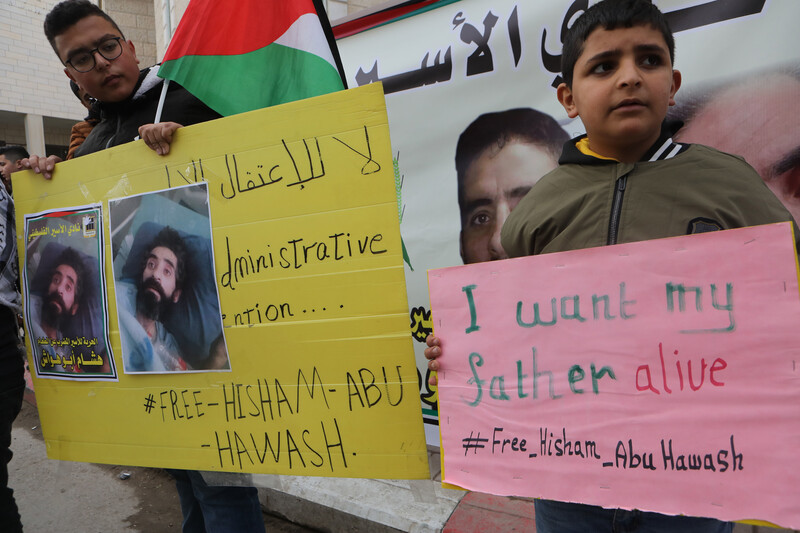
Palestinians in the West Bank city of Hebron rally in solidarity with Hisham Abu Hawash, on hunger strike for 141 days to protest his detention by Israel without charge or trial, 4 January.
APA images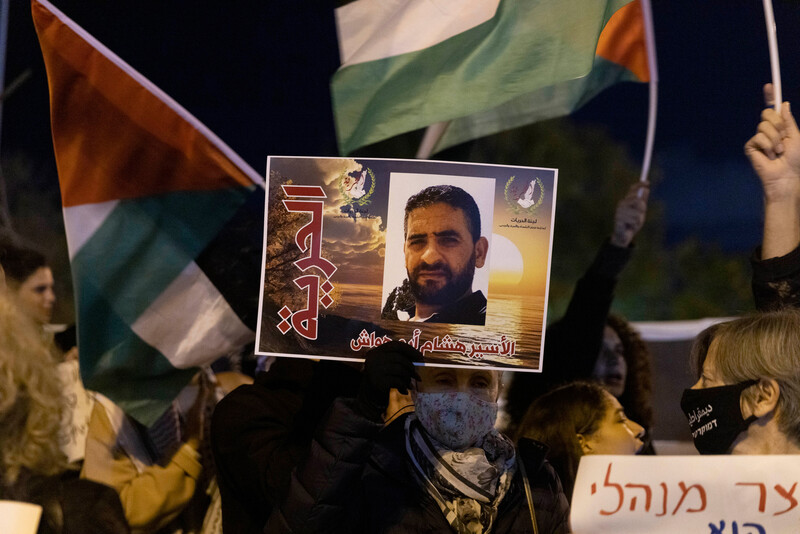
Protesters gather in front of the Shin Bet offices in Sheikh Muwannis (Tel Aviv University) in solidarity with the open-ended boycott of Israeli courts by the approximately 500 Palestinian administrative detainees, incarcerated without charge or trial, 4 January. The demonstrators, mostly Palestinian students, also called for the immediate release of Palestinian administrative detainee and hunger striker Hisham Abu Hawash.
ActiveStills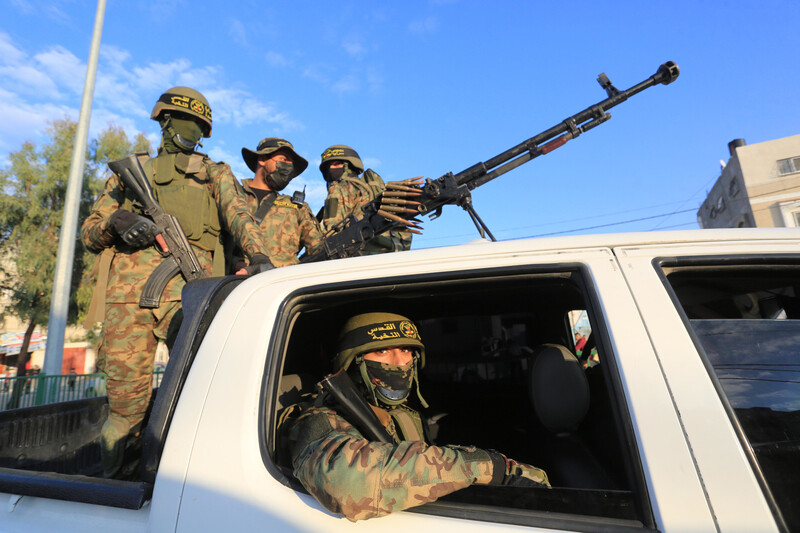
Palestinian fighters with the Quds Brigades, the armed wing of Islamic Jihad, take part in a military parade in Gaza City celebrating the end of Hisham Abu Hawash’s lengthy hunger strike in Israeli prison after Israel agreed to his release, 5 January.
APA images
Palestinian artist Dima Karaz, 19, performs a contemporary dance on the roof of her Gaza City home on 6 January.
APA images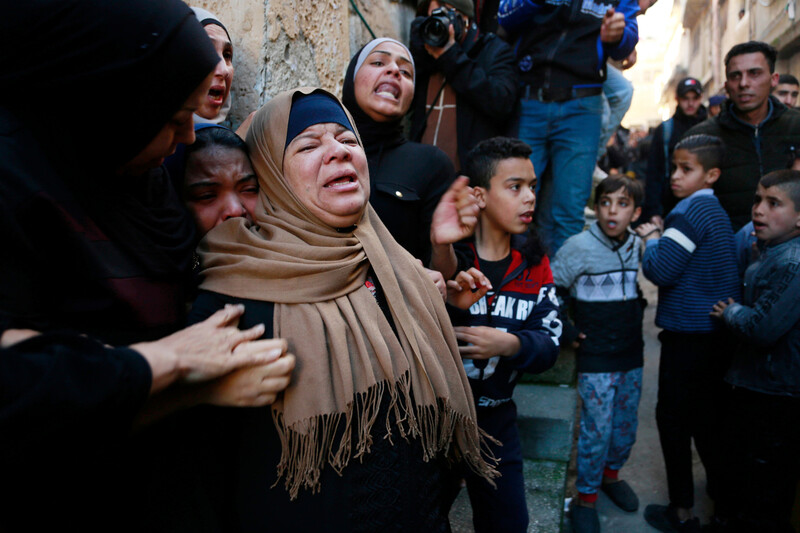
Mourners attend the funeral for Bakr Hashash, 21, in Balata refugee camp in the West Bank city of Nablus, 6 January. Hashash was killed in a shootout with Israeli soldiers earlier in the day.
APA images
Palestinians attend the funeral of eight laborers who died a day earlier in a traffic accident, Aqraba, near the West Bank city of Nablus, 7 January. Palestinian Authority leader Mahmoud Abbas declared a day of mourning across the West Bank and Gaza Strip.
APA images
Palestinians run from tear gas fired by Israeli soldiers in Beita, a village in the northern West Bank, 7 January. Palestinians in Beita have steadfastly protested an Israeli settlement outpost and military base erected last year on Palestinian land on a hill adjacent to the village. Israel has killed several Palestinians and injured hundreds since the protests began.
ActiveStills
Older Palestinians swim in the Mediterranean sea off of Beit Lahia, northern Gaza Strip, 8 January.
APA images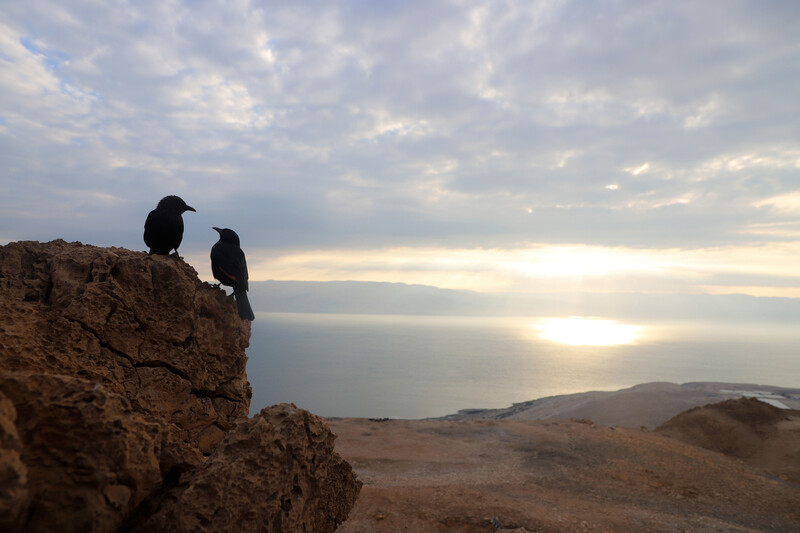
Birds are seen near the Jerusalem wilderness east of the West Bank city of Bethlehem, 9 January.
APA images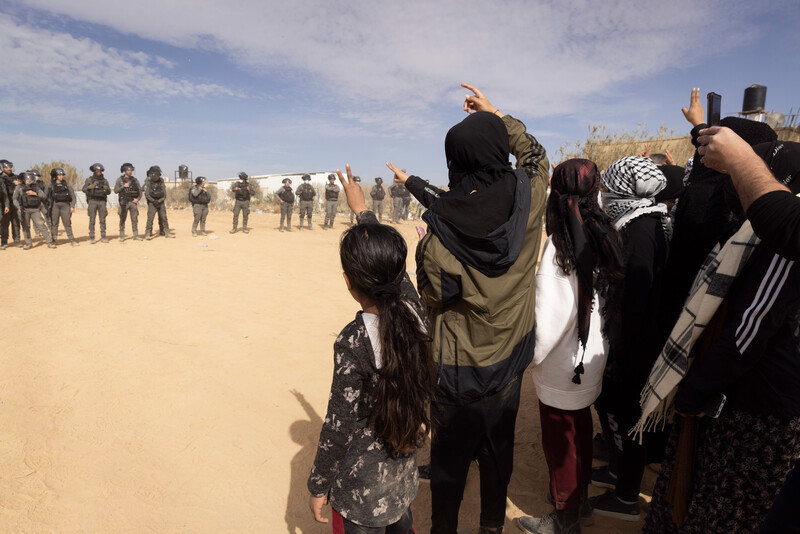
Palestinian Bedouins with Israeli citizenship confront Israeli police while protesting a Jewish National Fund afforestation project that would displace them from their lands, 12 January.
ActiveStills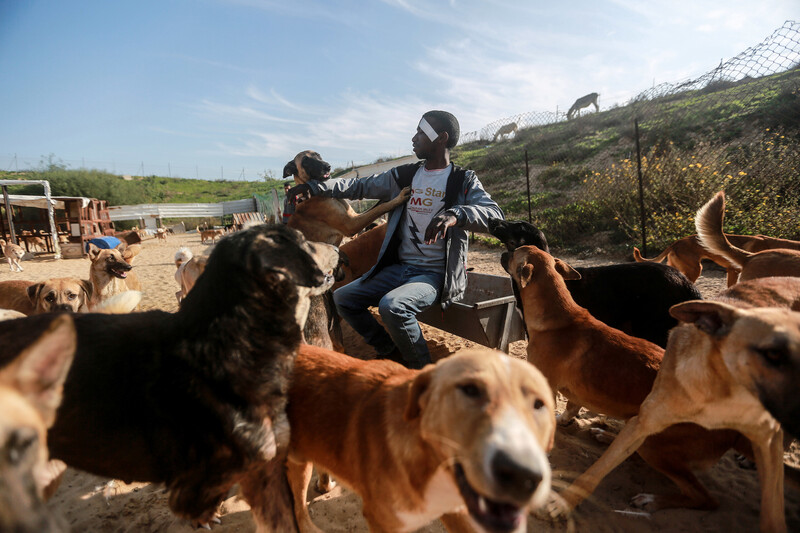
Saed al-Aer plays with the dogs at the Sulala Society for Animal Care shelter in Gaza City on 13 January.
APA images
Palestinians protest in solidarity with Nasser Abu Hamid, a cancer patient imprisoned by Israel, in the West Bank city of Nablus on 13 January.
APA images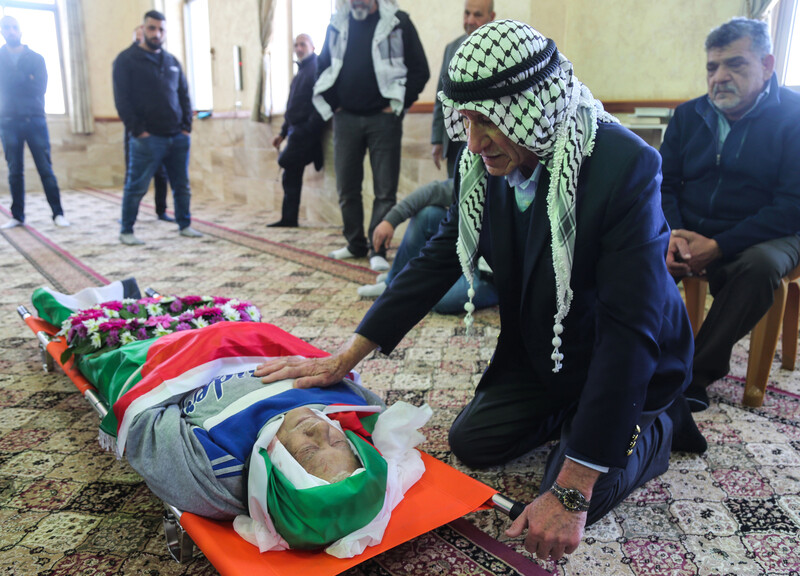
Palestinians mourn during the funeral for Omar Assad, who died of a heart of attack while detained by Israeli soldiers in Jiljilya village, central West Bank, 13 January.
APA images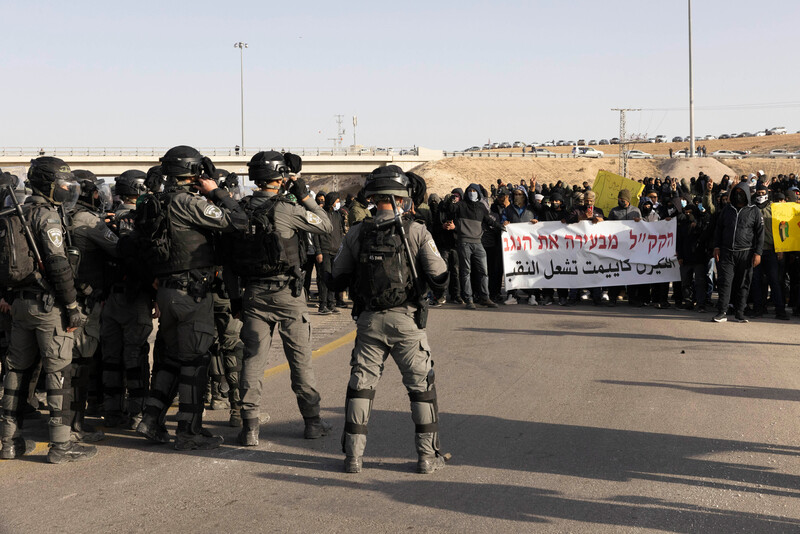
Palestinian Bedouins from the Naqab confront Israeli police on Road 31 near the village of Sawa al-Atrash while protesting a Jewish National Fund afforestation project that would displace them from their lands, 13 January 2022.
ActiveStills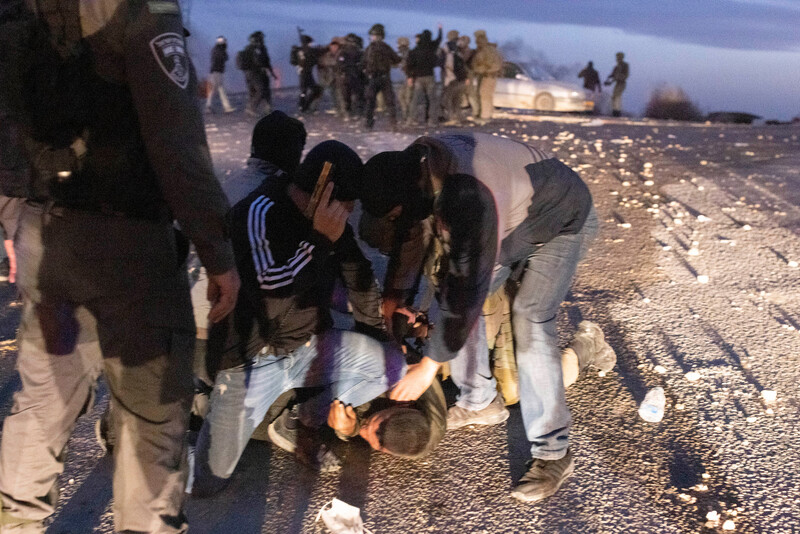
Undercover Israeli police arrest a protester during demonstrations near the Naqab village of Sawa al-Atrash, 13 January.
ActiveStills
Palestinians in Jabaliya refugee camp, northern Gaza Strip, protest against a Jewish National Fund afforestation project in the Naqab desert, 14 January.
APA images
Palestinian civil defense navigate a flooded street in Jabaliya refugee camp, northern Gaza, following heavy rains, 16 January.
APA images
Thousands of Palestinians gather in the West Bank village of Umm al-Kheir for the funeral of activist and community leader Haj Suleiman Hathaleen, 18 January. Hathaleen died the previous day from injuries sustained when he was struck by a tow truck during an Israeli police operation in the village two weeks earlier. Carmel settlement is seen in the background.
ActiveStills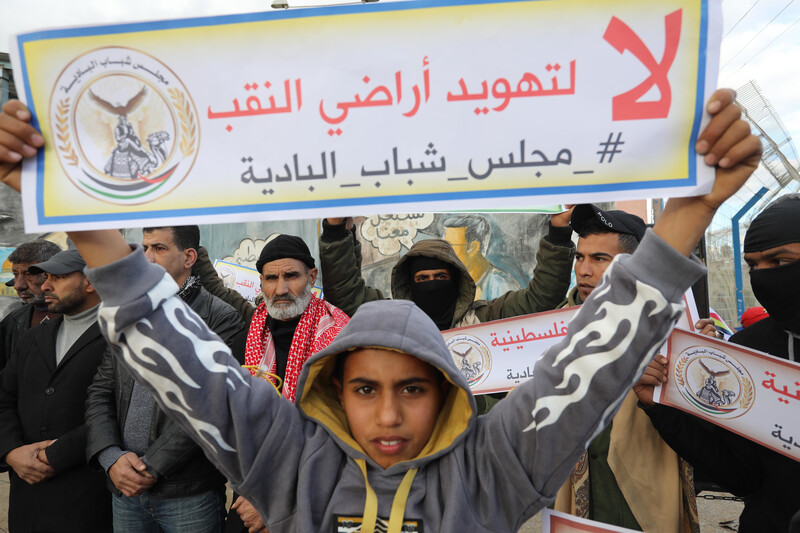
Palestinians in Beit Hanoun, northern Gaza Strip, rally in solidarity with Bedouin communities in the Naqab protesting against a Jewish National Fund afforestation project, 20 January.
APA images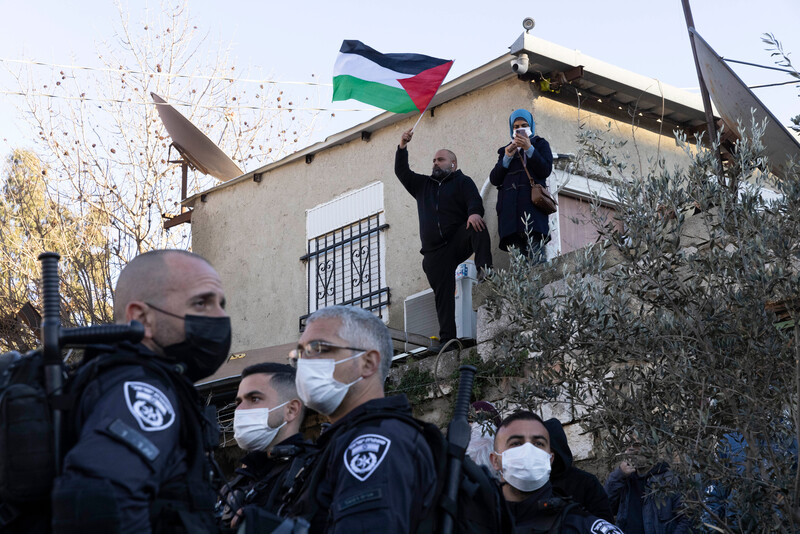
Members of the Salah family watch activists take down a fence in their yard that was set up by settlers earlier that day during the weekly protest in Sheikh Jarrah, a neighborhood in East Jerusalem where several Palestinian families are facing forced displacement by Israel, 21 January.
ActiveStills
Israeli soldiers detain a Palestinian boy during confrontations in the West Bank city of Hebron on 21 January.
APA images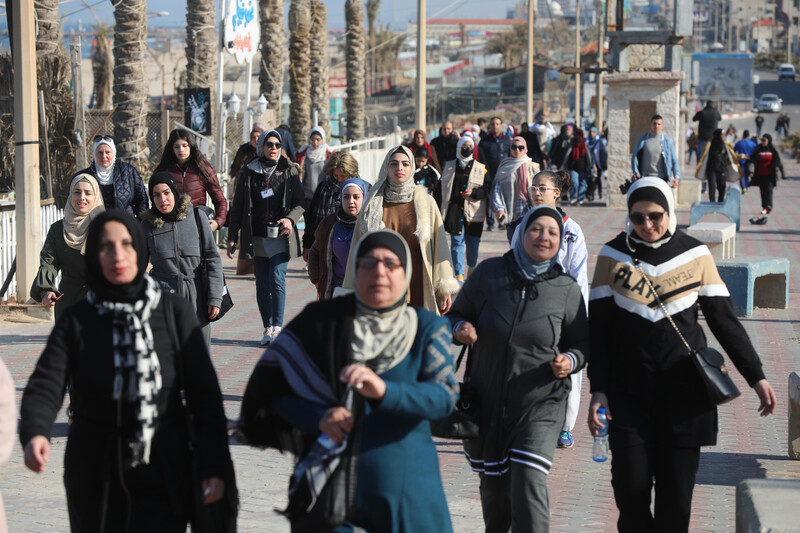
Palestinian women walk for morning exercise in Gaza City during a campaign to promote positive social change in the West Bank and Gaza Strip, 22 January.
APA images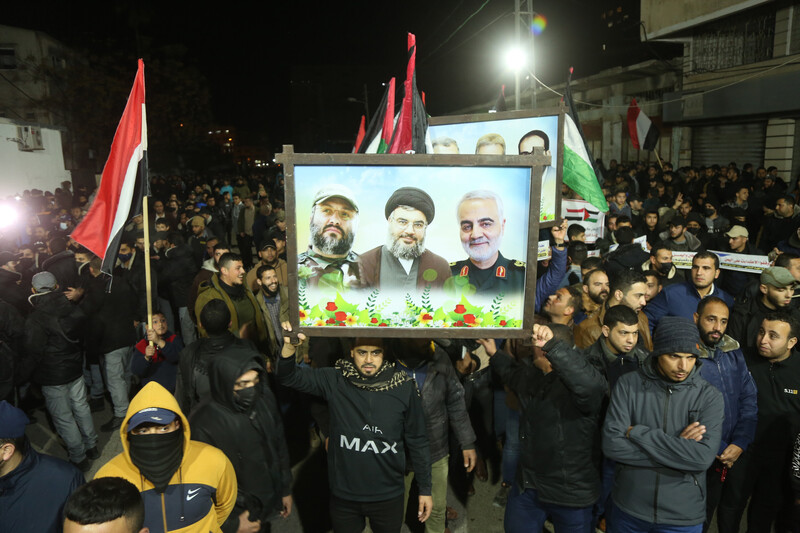
Palestinian supporters of the Islamic Jihad resistance group demonstrate in Gaza City in solidarity with the Yemeni people, 22 January. The UN chief condemned Saudi-led air raids on the city of Saada in northern Yemen and called for an investigation into the attacks that killed more than 70 people.
APA images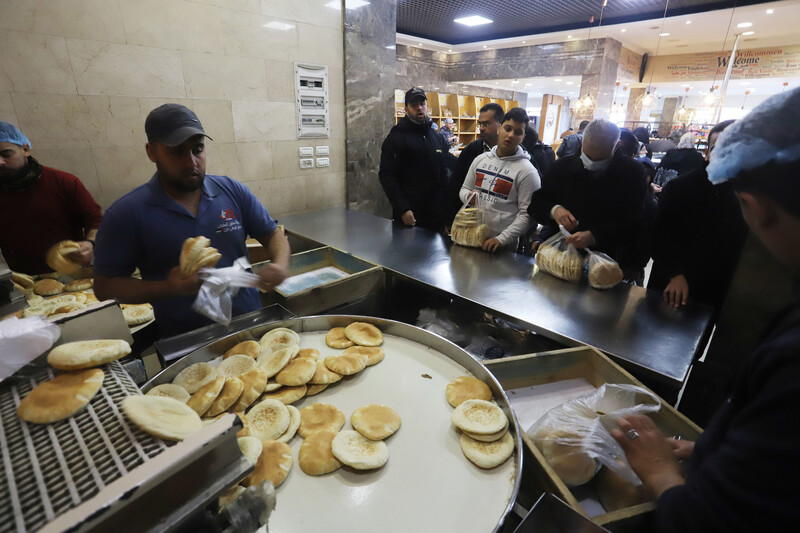
Palestinians in Gaza City stock up on bread ahead of a heavy storm on 26 January.
APA images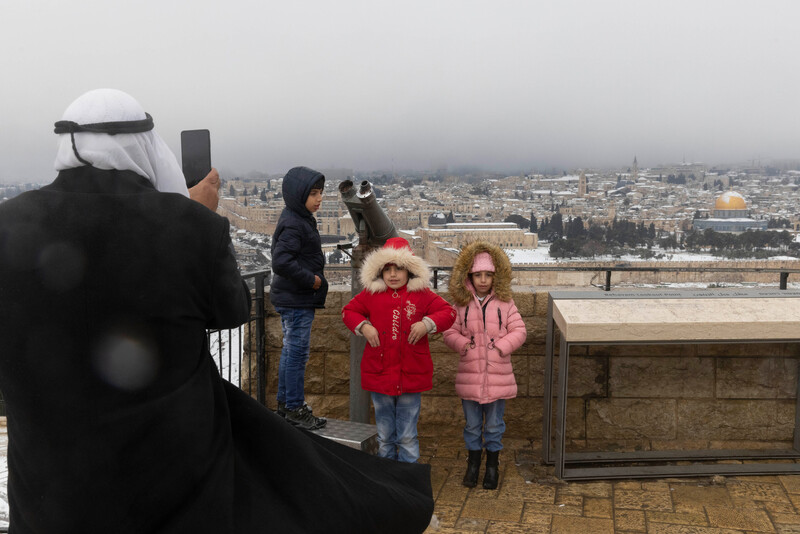
Snow covers East Jerusalem on 27 January.
ActiveStills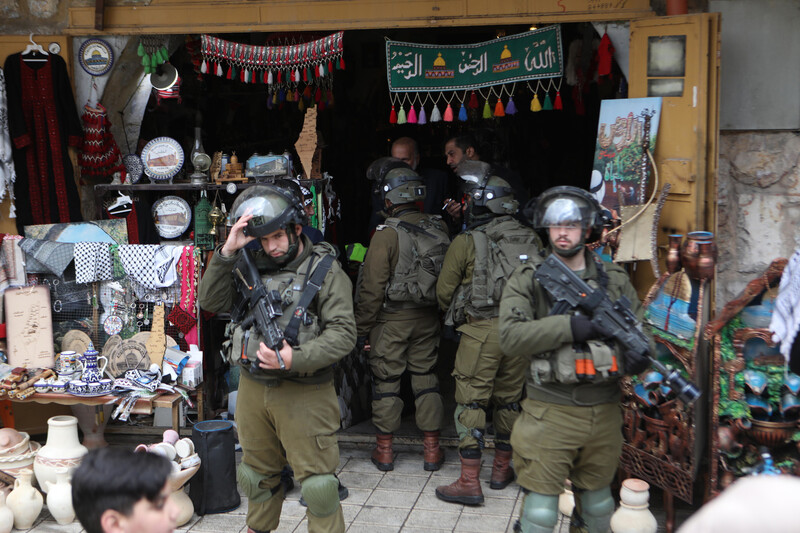
Israeli soldiers close Palestinian-owned shops in the Old City of the West Bank city of Hebron for no apparent reason on 29 January. Israeli settlers gathered at the entrance of the Old City and threw rocks at shopkeepers and passersby.
APA images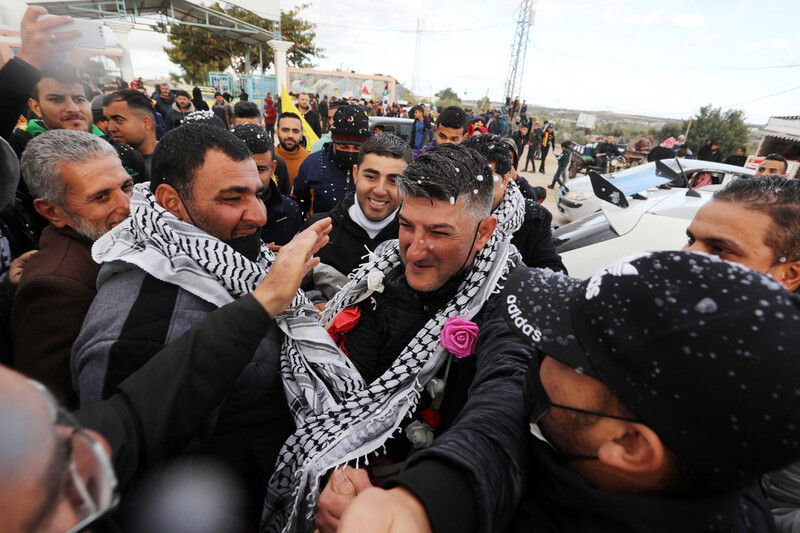
Nashat Abu Rock, 41, is greeted by relatives at Erez checkpoint in northern Gaza after being released following five years of Israeli imprisonment, 30 January.
APA images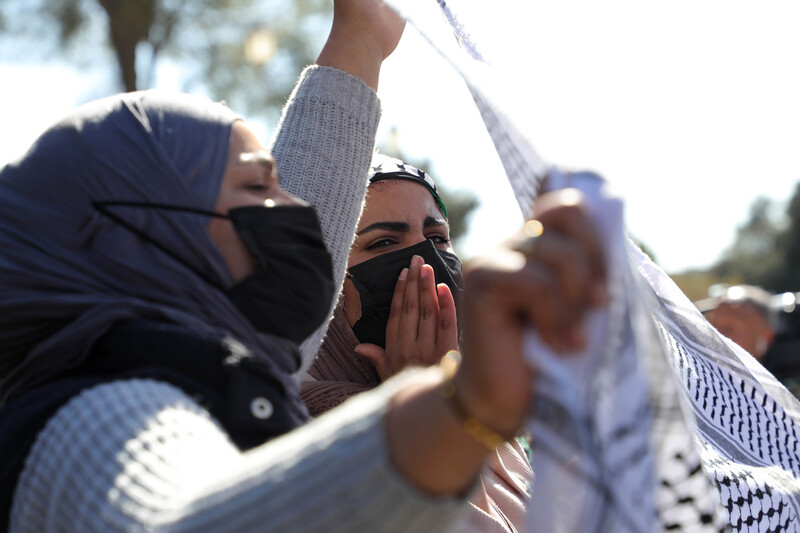
Palestinians rally in front of the Israeli prime minister’s office in Jerusalem to protest against the Jewish National Fund afforestation program being carried out as a means of colonizing the Naqab desert and preventing Bedouin communities from using the land for grazing and agriculture, 30 January.
ActiveStills
A Palestinian health ministry medic takes a sample to test for COVID-19 in the West Bank city of Nablus on 31 January.
APA images

